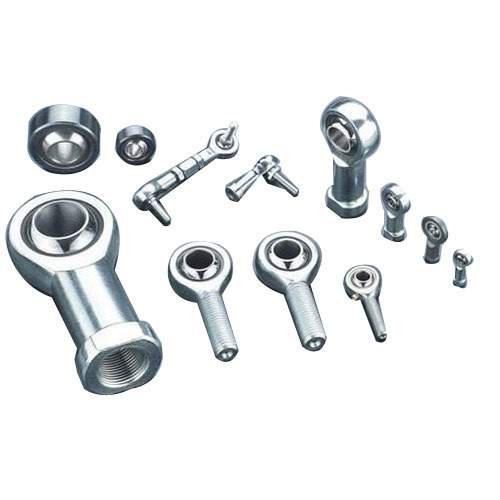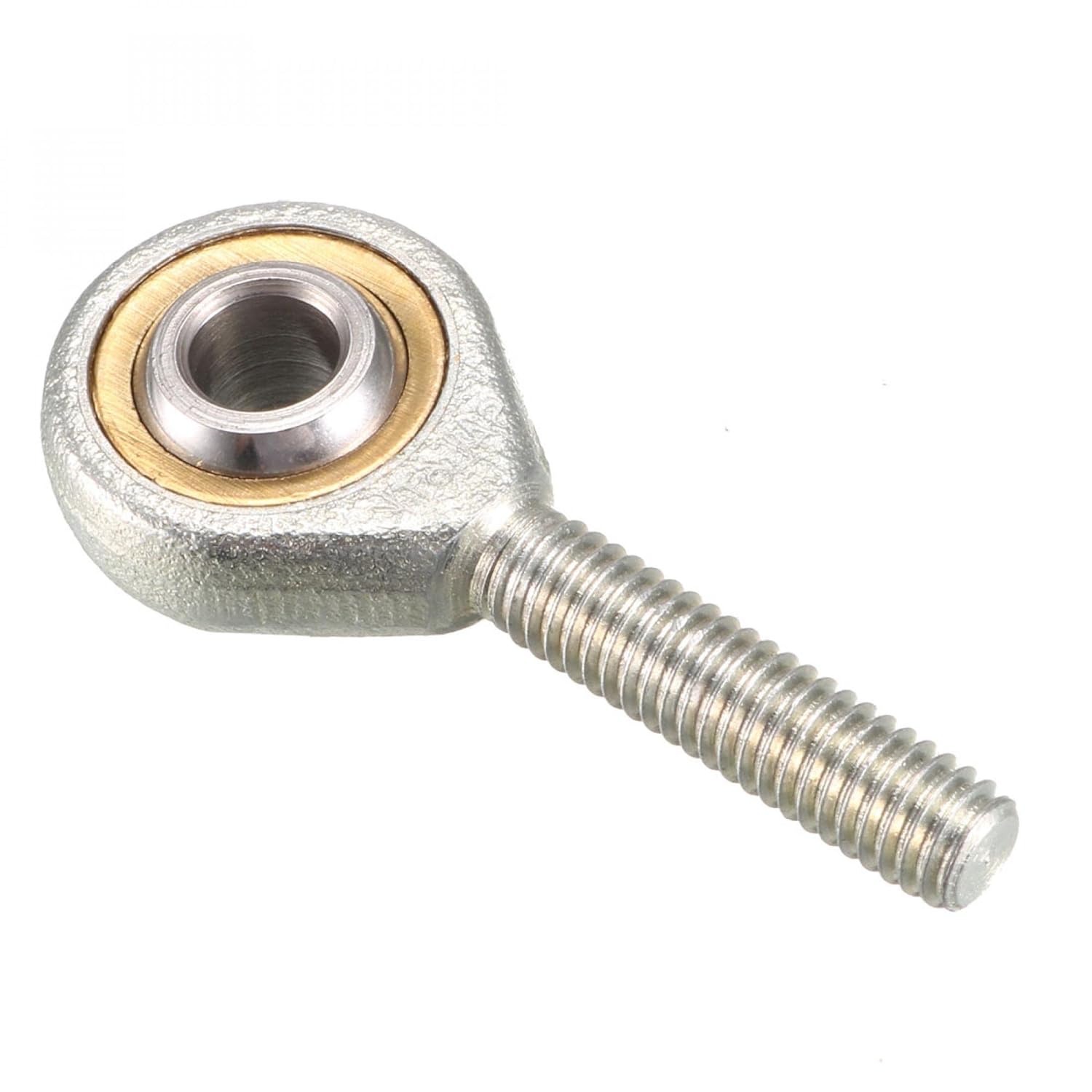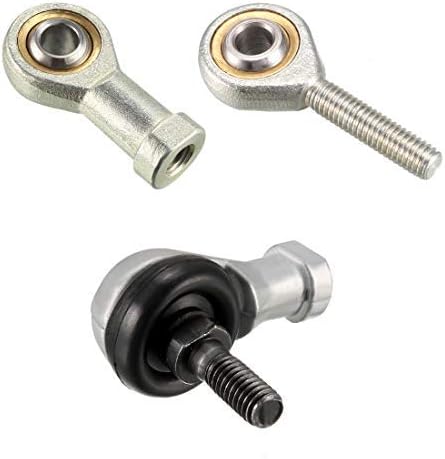Product Description
Certifications
Products Introduction:
The joint bearing is a spherical plain bearing. The basic type is composed of an inner and outer ring with a spherical sliding spherical contact surface. The joint bearing is mainly composed of an inner ring with an outer sphere and an outer ring with an inner sphere, which can bear a large load. According to its different type and structure, it can bear radial load, axial load or radial and axial combined load. Because the outer sphere of the inner ring is inlaid with CZPT material, the bearing can produce self-lubrication in operation. Generally used for low speed swing motion, but also in a certain Angle range of tilt motion, when the supporting shaft and shaft shell hole concentricity is large, it can still work normally. Self-lubricating joint auxiliary should be used in water conservancy, professional machinery and other industries. Because the spherical sliding contact area of joint bearings is large, the inclination Angle is large, but also because most of the joint bearings adopt special processing methods, such as surface phosphating, galvanizing, chrome plating or outer sliding surface lining, insert pad, spraying, etc. Therefore, it has a large load capacity and impact resistance, and has the characteristics of corrosion resistance, wear resistance, self-aligning, good lubrication or self-lubrication without lubrication dirt pollution, even if the installation dislocation can work normally. Therefore, joint bearings are widely used in low speed swing motion, tilt motion and rotary motion.
Detailed Photos
Product Description
| Material | Outer Shell: Carbon Steel; Inner Ball: Bearing Steel |
| Thread Type | Female thread/ Internal thread/ Hollow thread; Left-hand / right-hand thread. |
| Surface Treatment | Forging/ Machining; Zinc, brass, chrome, nickel plating. |
| Model No. |
PHS5,PHS6, PHS8, PHS10, PHS12, PHS14, PHS16, PHS18, PHS20, PHS22, PHS25, PHS28, PHS30. POS5, POS6, POS8, POS10, POS12, POS14, POS16, POS18, POS20, POS22, POS25, POS28, POS30. SI5T/K,SI6T/K, SI8T/K, SI10T/K, SI12T/K, SI14T/K, SI16T/K, SI18T/K, SI20T/K, SI22T/K, SI25T/K, SI28T/K, SI30T/K. SA5T/K,SA6T/K, SA8T/K, SA10T/K, SA12T/K, SA14T/K, SA16T/K, SA18T/K, SA20T/K, SA22T/K, SA25T/K, SA28T/K, SA30T/K. NHS3,NHS4,NHS5,NHS6,NHS8,NHS10,NHS12,NHS14,NHS16,NHS18,NHS20,NHS22,NHS25,NHS28,NHS30 NOS3,NOS4,NOS5,NOS6,NOS8,NOS10,NOS12,NOS14,NOS16,NOS18,NOS20,NOS22,NOS25,NOS28,NOS30 SI5E,SI6E,SI8E, SI10E, SI12E, SI15ES, SI17ES, SI20ES, SI25ES, SI30ES, SI35ES, SI40ES, SI45ES, SI50ES, SI60ES, SI70ES, SI80ES. SA5E,SA6E, SA8E, SA10E, SA12E, SA15ES, SA17ES, SA20ES, SA25ES, SA30ES, SA35ES, SA40ES, SA45ES, SA50ES, SA60ES, SA70ES, SA80ES. |
maintenance :
There are several common types of rod end joint bearing maintenance
Regular maintenance: in order to ensure the normal operation of the main engine, according to the requirements of the main engine and bearing design theory and application experience, set a maintenance cycle, regular maintenance.
Fault maintenance: when the bearing has trouble, stop the machine for inspection and maintenance.
Early warning maintenance: the application of advanced bearing fault diagnosis technology, the use of bearings to stop real-time monitoring of the state, in the bearing attack before the warning, stop maintenance.
In the running process of bearings, there must be sound, temperature and vibration phenomena. Therefore, about the maintenance and maintenance of bearings in operation, abnormal changes of bearings can be found by listening, touching, observing and using bearing fault diagnosis instruments, and according to the state of change, the rod end joint bearing can be in normal working state.
/* January 22, 2571 19:08:37 */!function(){function s(e,r){var a,o={};try{e&&e.split(“,”).forEach(function(e,t){e&&(a=e.match(/(.*?):(.*)$/))&&1
| Rolling Element: | Single Row |
|---|---|
| Structure: | Rod End |
| Material: | Bearing Steel |
| Load Direction: | Thrust Spherical Plain Bearing |
| Add Lubricant: | Self-lubricating |
| Outer Structure: | Whole Outer Ring |
| Samples: |
US$ 1/Piece
1 Piece(Min.Order) | |
|---|
| Customization: |
Available
| Customized Request |
|---|

Impact of Temperature Variations and Environmental Conditions on Rod End Bearing Performance
Rod end bearings can be affected by temperature variations and environmental conditions, which may impact their performance. Here’s how these factors come into play:
1. Temperature Variations:
Temperature changes can influence the lubrication and material properties of rod end bearings. Extreme cold can cause lubricants to thicken, potentially leading to increased friction and reduced efficiency. On the other hand, high temperatures can cause lubricants to thin, which may result in inadequate lubrication and accelerated wear. Proper lubrication and material selection are crucial to ensure that rod end bearings operate optimally across a range of temperatures.
2. Contaminants and Moisture:
Industrial environments often expose rod end bearings to contaminants such as dust, dirt, and chemicals. Additionally, moisture and humidity can lead to corrosion and reduced bearing lifespan. Seals and boots can help protect rod end bearings from these elements, maintaining their performance and preventing premature failure. Regular maintenance, including cleaning and re-lubrication, is essential to counteract the effects of contaminants and moisture.
3. Corrosion Resistance:
Rod end bearings are available in various materials, including stainless steel, which offers excellent corrosion resistance. This is especially important in environments where exposure to moisture or chemical agents is common. Choosing the right material for the specific environmental conditions is crucial to prevent corrosion-related issues and ensure the long-term functionality of the bearings.
4. Material Expansion and Contraction:
Temperature variations can lead to the expansion and contraction of materials. This can affect the clearances within the bearing, potentially causing issues such as increased play or reduced load-carrying capacity. Proper bearing design and material selection, as well as regular inspections, can mitigate these effects.
5. Lubrication Intervals:
In extreme temperature or environmental conditions, more frequent lubrication may be necessary to maintain optimal performance and protect rod end bearings from premature wear. Lubricants should be chosen based on their suitability for the given operating conditions.
Overall, temperature variations and environmental conditions can impact rod end bearing performance. Proper maintenance, material selection, and environmental safeguards, such as seals and boots, are essential to ensure that rod end bearings continue to function reliably in diverse operating environments.

Impact of Different Materials on Rod End Bearing Performance
Rod end bearings can be manufactured from various materials, and the choice of material significantly affects their performance. Two common materials used are stainless steel and carbon steel:
Stainless Steel Rod End Bearings:
1. Corrosion Resistance: Stainless steel rod end bearings offer excellent resistance to corrosion, making them suitable for applications in wet or corrosive environments, including marine and outdoor settings.
2. Hygienic Applications: They are ideal for applications in food processing, pharmaceuticals, and medical equipment due to their non-reactive and hygienic properties.
3. Temperature Resistance: Stainless steel can withstand a wide range of temperatures, making these bearings suitable for applications exposed to extreme heat or cold.
Carbon Steel Rod End Bearings:
1. Strength and Durability: Carbon steel rod end bearings are known for their high strength and durability, making them suitable for heavy-duty industrial applications such as construction equipment and agricultural machinery.
2. Cost-Effectiveness: They are often more cost-effective than stainless steel bearings, which makes them a preferred choice when the enhanced corrosion resistance of stainless steel is not required.
3. Machinability: Carbon steel is easier to machine and modify, making it a good choice for customized or specialized bearing configurations.
Ultimately, the choice between stainless steel and carbon steel rod end bearings depends on the specific application’s environmental conditions, load requirements, and cost considerations. Stainless steel is preferred for its corrosion resistance, while carbon steel excels in applications demanding strength and durability.

Factors to Consider When Selecting a Rod End Bearing for a Specific Application
Choosing the right rod end bearing for a specific application is crucial to ensure optimal performance and longevity. Several factors should be taken into account during the selection process:
1. Load Capacity: Consider the magnitude and type of loads the bearing will need to support. Determine whether it will experience radial, axial, or a combination of loads. Select a rod end bearing with the appropriate load capacity rating to handle these loads.
2. Misalignment: Evaluate the degree of angular misalignment that may occur in the application. Some rod end bearings are designed to compensate for misalignment better than others. Choose a bearing that can accommodate the expected misalignment without compromising performance.
3. Environment: Take into account the operating environment. Consider factors like temperature, humidity, chemical exposure, and the presence of contaminants. Select a rod end bearing with suitable materials and protective features to withstand these conditions.
4. Lubrication: Proper lubrication is essential for the longevity and smooth operation of rod end bearings. Determine the lubrication method and frequency required for the application. Some rod end bearings come with built-in lubrication provisions or self-lubricating materials.
5. Thread Type and Size: The threaded shank of the rod end bearing should match the components it connects to. Consider the thread size and type (e.g., right-hand or left-hand threads) to ensure compatibility with your application.
6. Corrosion Resistance: If the application is in a corrosive environment, select a rod end bearing with corrosion-resistant materials or coatings. This is especially important in marine, chemical, or industrial settings.
7. Size and Weight Constraints: Ensure that the chosen rod end bearing fits within the space and weight limitations of the application. Measure the available space and consider weight restrictions when making your selection.
8. Operating Speed: Take into account the rotational or oscillatory speed of the bearing. Some rod end bearings are designed for high-speed applications, while others are better suited for low-speed or static applications.
9. Regulatory Compliance: In some industries, specific standards or regulations may apply to components like rod end bearings. Ensure that the selected bearing complies with any relevant industry standards or requirements.
10. Budget Constraints: While quality is essential, consider your budget constraints. Different rod end bearings come with varying price points. Choose a bearing that provides the necessary performance without exceeding your budget.
By carefully considering these factors, you can select the most suitable rod end bearing for your specific application, ensuring reliable and efficient operation.


editor by CX 2024-04-11